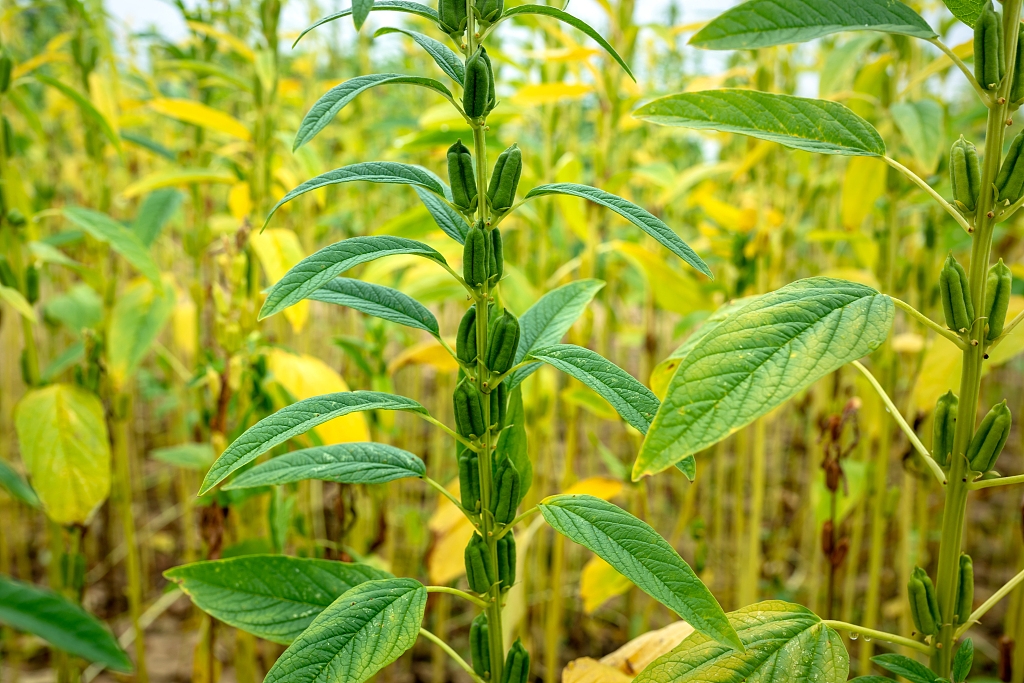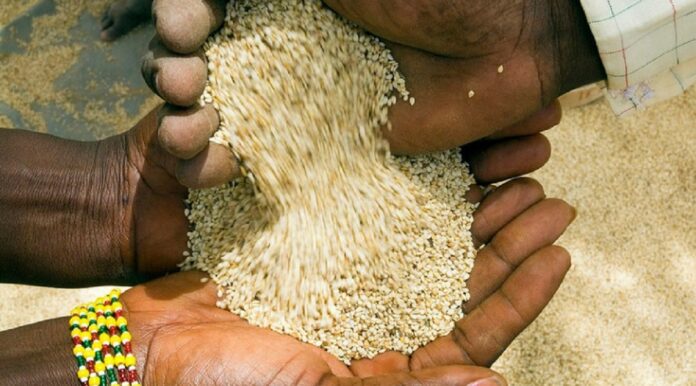What is sesame?
Sesame seeds are small seeds found in the pods of a flowering plant scientifically called sesanum indicum. Sesame thrives so well in the tropical regions, making Sudan, Myanmar, and India major producers in the world. It has one of the highest oil content of any seed, with a rich, nutty flavour. It is indeed a highly demanded international commodity. So, it is good for business in agriculture.
It is largely an annual crop with an extensive root system that makes it very tolerant of drought.
For unimproved varieties, maturity takes about 125 to 135 days. Commercial varieties mature in between 90 to 120 days.

What is sesame used for?
It is a popular ingredient in dishes made and consumed in Southeast Asian countries. Sesame oil and all kinds of spice mixes are made from sesame. It is also used in biscuits, bread, crackers, puff pastry, cosmetics, and some medicines.
Is sesame grown in Ghana?
Interestingly, farmers in the Northern, Upper East, and Upper West regions have been growing the crop for decades. This has taken firm roots, giving rise to the formation of the Ghana National Sesame Business Farmers Association (GNSBFA).
It grows well in medium to light, well-drained soils with pH 5-8. You can achieve a good yield on land with a balanced NPK fertilizer. It is a deep-rooted crop. It scavenges for nutrients beyond most root zones. You have to, however, fertilize after the first season.
In 2019, Ghana sold 2,153 tonnes of sesame seeds valued at $2.36 million USD. Leading destinations for Ghana’s sesame seeds are China, Turkey, India, Morocco, and Switzerland.
Currently, there is no direct government support for sesame production in Ghana. However, there are engagements and increased calls on the government to support growers.
Is sesame the new gold?
Sesame production is more profitable with limited resources than other crops like maize, millet, sorghum, rice, cowpea and soybean. This offers more returns at a lesser cost and risk.
It is very drought and insect resistant and also suppresses the root-knot nematode and cotton root rot for subsequent cultivation of other crops.
The cultivation of this important crop has a residual positive effect on the crops that follow by increasing water retention and soil tilth, thereby increasing the yield of the crop at a reduced cost.
It is not adversely affected by damage from deer, hogs, and birds.
It does well in the savanna areas of the country, mainly the Northern, Upper East, and Upper West regions. Achievable yields are in excess of 1.2 tons/ha in the transitional zone of Ghana and the price per kilo is quoted at around GHC 6.20 ($1)
It is a highly demanded commodity in the global market.
What are the major challenges to sesame production in Ghana?
Currently, the high cost of sesame products is the major issue. Since growers do not enjoy subsidies on inputs including fertilizer, they have to pay full taxes imposed on all inputs for production. The high production cost affects pricing, thus serving as a major disincentive for buyers and exporters who tend to look to other producing countries with lower tax demands for the product.
This affects demand negatively forcing farmers to reduce the prices of their produce.
This challenge notwithstanding, sesame is evolving as a key crop worthy of a grower’s investment, and there is a need for the necessary attention to define and engage all relevant value chain actors to improve productivity.


